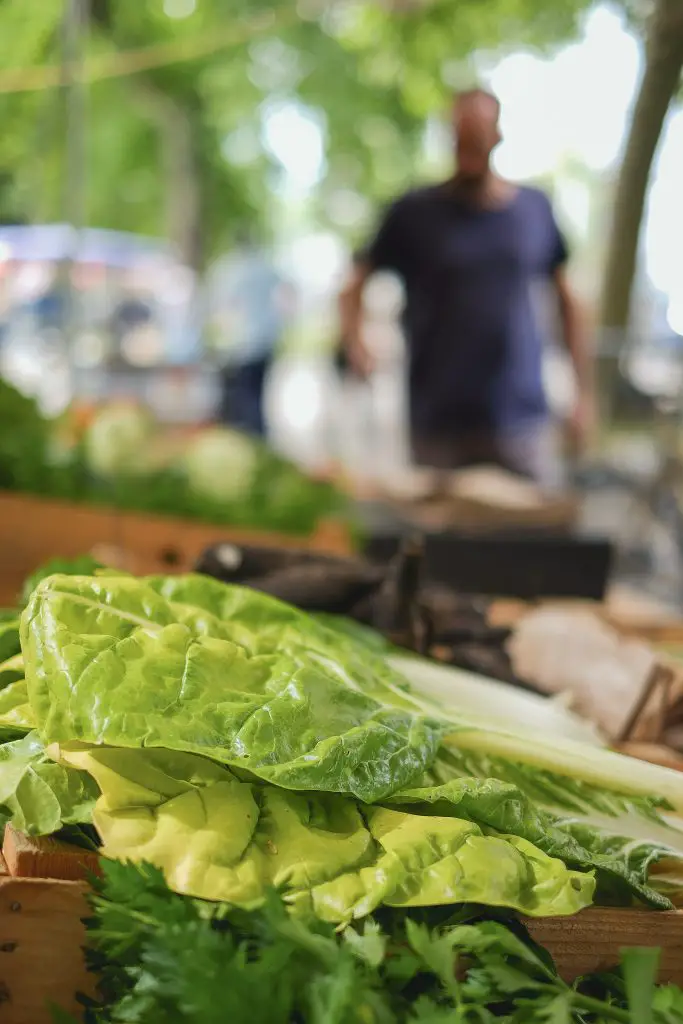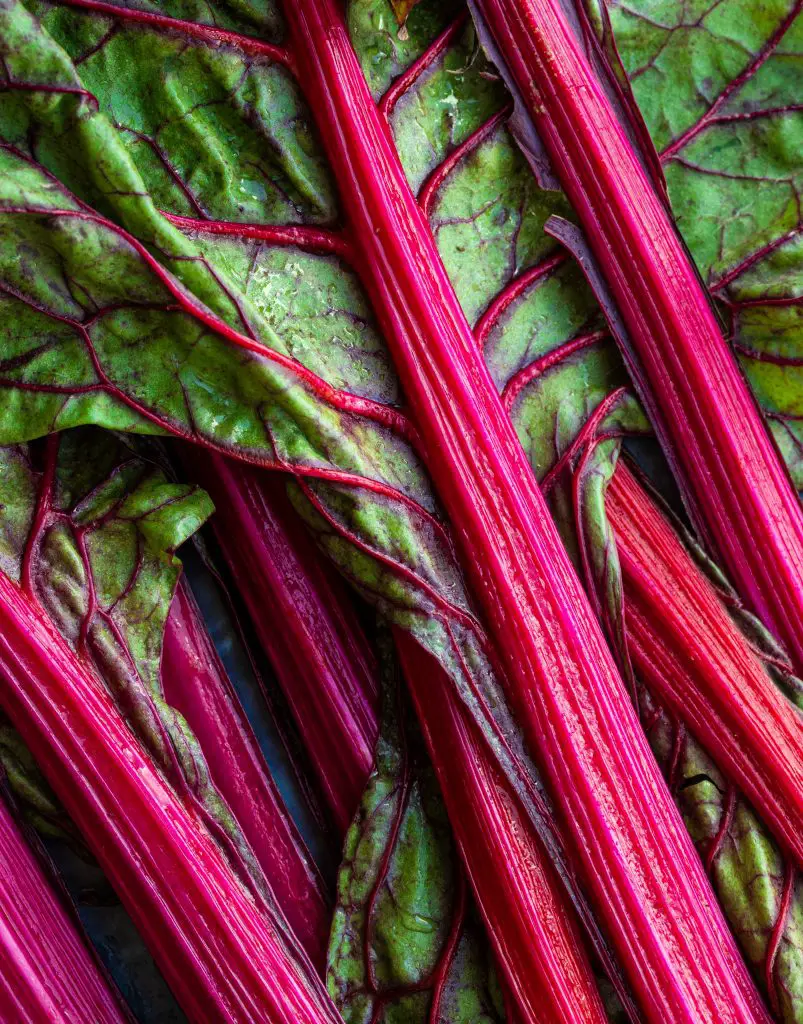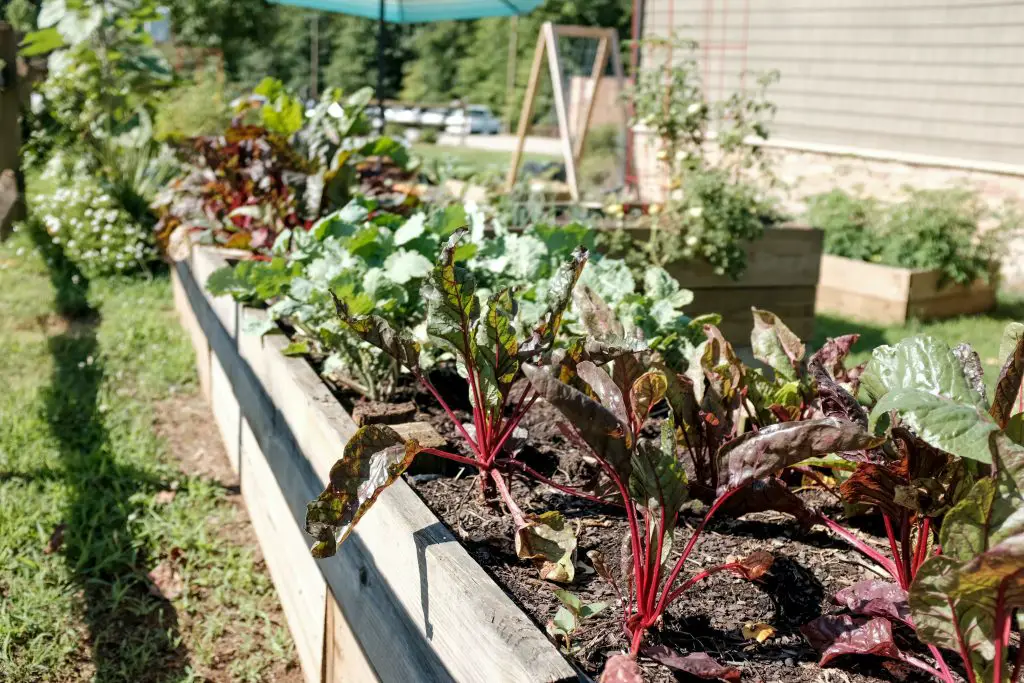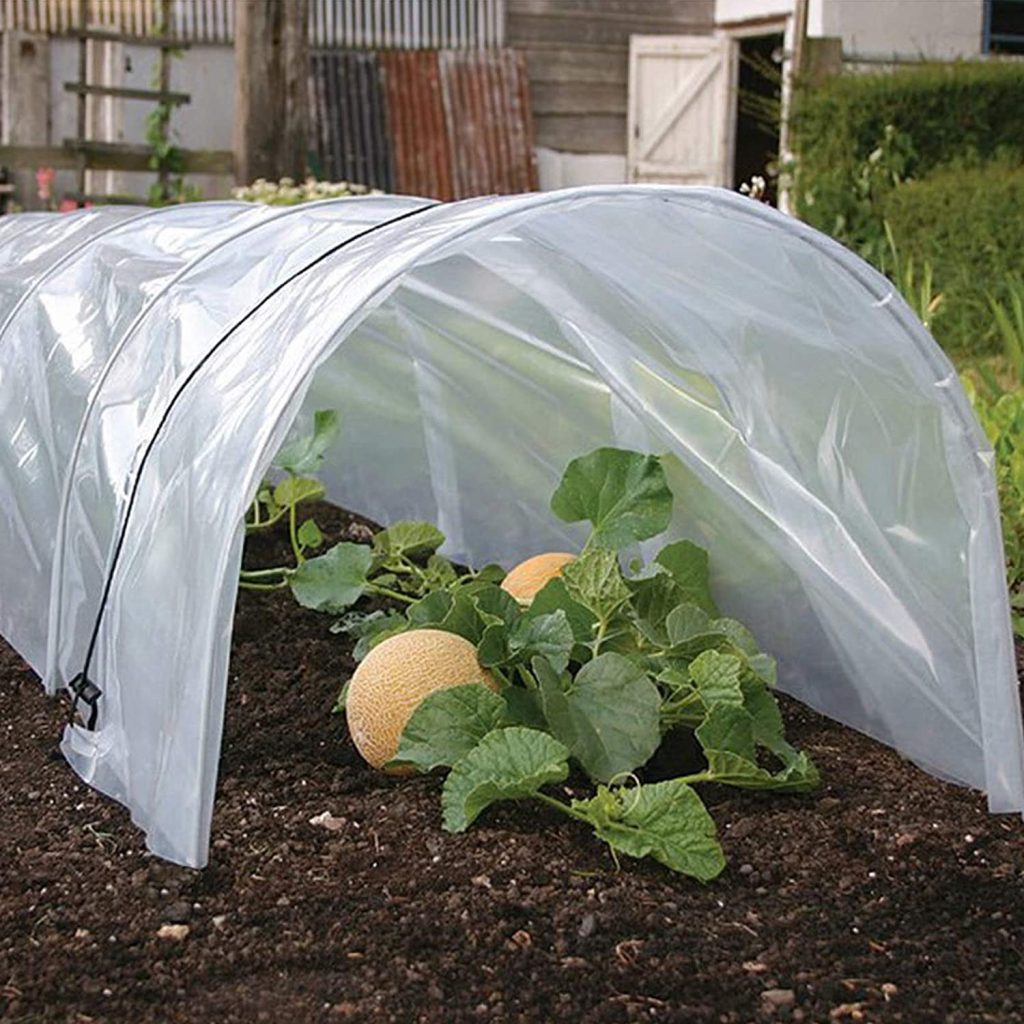Swiss chard is one of the most popular leafy green vegetables that is grown in the garden at home. It is one of the longest producing leafy greens in the garden that you can get, however, one of the most common questions that is asked by gardeners is how much does a Swiss chard plan actually produce in a season?
Swiss chard plants will typically produce somewhere between 6 and 8 lbs (3 to 4 kg) of leaves in a season according to a study by the University of namibia. However, this can vary quite significantly depending upon the specific climate in which the plant is grown because in relatively mild climates swiss chard can continue to produce throughout the winter months and in these cases, you can typically expect to get almost double that amount.
The other factors that significantly affect the yield of the plants are the frequency of the harvest and also the particular variety grown as the leaf size of different plants can vary quite significantly. To check out the varieties that are available we highly recommend that you visit seeds now by clicking on the link below as they have a wide range of varieties available to purchase.
If you are considering planting swiss chard I would generally recommend that you plant 1 to 2 plants per person in a household and this will produce more than enough leafy greens throughout the growing season.
In terms of output, Swiss chard is among the most prolific leafy Greens and for me would be the first choice to plant in my garden based on the sheer volume and longevity of the plant which will ensure you have an incredibly large harvest.
How Long Does A Swiss Chard Plant Last?
Swiss chard plants are biennial plants which means that they will develop and grow leaves in the first season before producing flower heads in the second season. At this point they should be removed from the garden and replaced with new plants.
To ensure that you have a continuous year-round supply of swiss chard it is advisable to sow seeds in late winter or early spring indoors to get the new plants going before mature plants set seed, which typically happens in late spring.

How To Grow Swiss Chard Plants
Swiss chard plants are generally quite easy to grow and are tolerant of a wide range of climatic conditions from extreme heat to frosty conditions. However, if the temperatures are a couple of degrees below zero that will usually be sufficient to destroy the foliage of the plant.
As mentioned above most gardeners tend to plant the seeds in spring to ensure that the plant is in full harvest by the summer. Seeds can be sown directly into the garden, however, to get an extra-early harvest it is advisable to start seeds in a seed tray indoors.
To start the seeds off in seed trays start by filling them with a good quality seed raising mix ensuring that the mixture is firmed into the cells of the seed tray to form solid plugs. This is beneficial because it makes the transplanting of the seedlings much easier and also reduces the degree of root disturbance when this process occurs.
It is best to plant 2 to 3 seeds per cell at a depth of approximately 0.5 to 1 inches as this will ensure that you get at least one plant per cell. If all the seeds germinate it is best to thin out the weakest seedlings leaving one plant per cell.
The seed tray should then ideally be placed in a warm sunny location inside and kept moist throughout the germination period. Seeds will typically take 7 to 10 days to appear and will typically need to spend approximately 6 weeks in a seed tray before they can be planted out into the garden.
If you live in a particularly cold location it may be worth considering purchasing a heated seat tray as that will ensure that the seedlings develop at a reasonable in early spring.

Transplanting The Seedlings Into The Garden
Seedlings can be planted out into the garden once they reach a height of approximately 2 to 3 inches tall and the weather outside is sufficiently warm. While chard is tolerant of frosty conditions it will still benefit from being planted out once the weather has started to warm up a bit as the growth rate will be significantly faster.
In terms of spacing, swiss chard plants should be placed approximately 1 to 1 and 1/2 ft apart as the plant will get relatively large once they get going. Swiss chard plants do best in sunny conditions, however, they are a vegetable that will tolerate shade as well but the growth rate of the plant is generally slower in these conditions.
The plants will also do well if they are placed in soil that is rich moist and free-draining however they will tolerate a variety of different soil types. If your soil is sandy or heavy clay base is it advisable to add bags of compost as this will help to increase the nutrient level and improve the structure of the soil.
As the plants are leafy greens they are also highly susceptible to attack from slugs and snails particularly early in the season and therefore do require some protection.
To ensure that they do not get eaten it is advisable to sprinkle snail pellets around the plants on the day that they are planted and you may also consider putting physical protections in place such as cloches which will also help with the rate of growth earlier on due to the increased temperature. If you don’t own a cloche as can be made easily by taking an old plastic milk carton and cutting the bottom of it and removing the lid.

The extent of problems with slugs and snails will generally go away once the plant becomes established and reaches a height of approximately 6 inches from this point onwards slugs and snails may have a nibble but it will not affect the survival of the plant.
In addition to protecting the plants, they will also benefit from a thick layer of mulch as that will help to retain moisture throughout the warmer months.
Once all of these steps are in place there is generally little maintenance required to look after the chard other than to ensure that it is watered regularly in warm conditions.
Harvesting Swiss Chard
To ensure that you have a continuous harvest of leaves it is best to wait until a plant reaches a height of 6 to 8 inches before taking the first harvest. When taking a harvest from the plant it is best to remove the outer leaves from the plant first as they will be the oldest on the plant.
To ensure that the plant recovers quickly from any harvest that is taken it is a good idea to leave at least a few central leaves on the plant so it can continue to grow and photosynthesize throughout the season. If you do this you will have a continuous supply of chard leaves throughout the growing season.
In the winter months as mentioned above, you can continue to harvest swiss chard provided that it does not get too cold in your region. If you have conditions that are consistently below freezing during the winter period is advisable to apply a row cover to the plant as this will help to protect the leaves from the worst of the winter weather.
If you need to purchase a row cover the one that we recommend is shown below. Click on the link to visit Amazon to check out the latest price.

Extend Your Season With Growsun Row Covers
I hope you found this article useful and have great success growing swiss chard at home in your own garden, if you have any additional comments or questions please leave them in the section below.
Relevant Articles
Is Chard A Brassica? If Not What Is It?
Is Swiss Chard And Rhubarb The Same Thing? How Do You Tell The Difference?
Is Chard And Kale The Same Thing?
Chard Vs Spinach: Are They The Same Thing?

